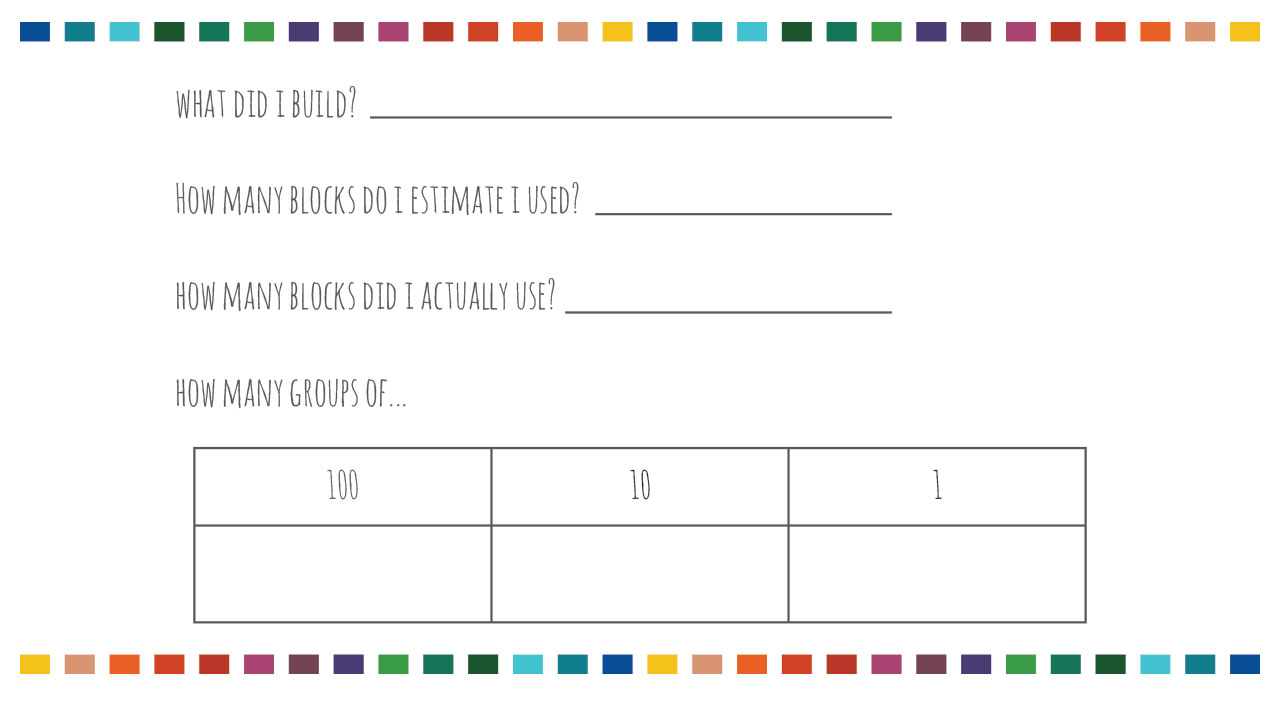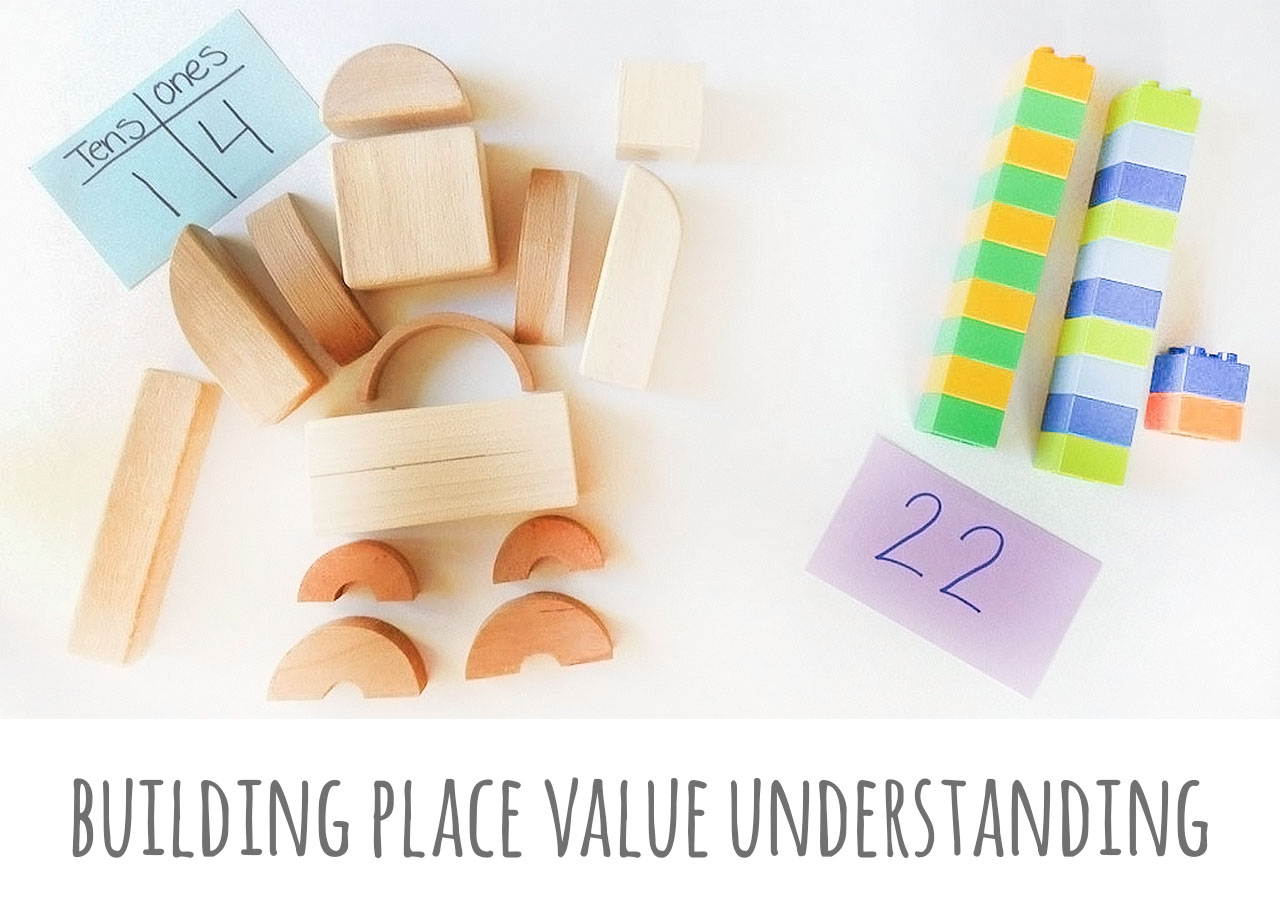Building Place Value Understanding
The mathematical concept of place value is an essential one for young learners to grasp. Place value understanding will help children move on – and thrive – with more advanced math.
“Place value” is the phrase we use to talk about how numbers, when arranged in different places, show different amounts. For example, in the number 24, there are 2 groups of “tens” and 4 single “ones.” In the number 487, there are 4 “hundreds,” 8 “tens” and 7 “ones.” If we switch the number 4 with the number 8, we suddenly have 847 – a completely different number, with a different amount of “hundreds” and “tens.”
Place value is a concept that begins to be taught once children can count to 100, and know basic addition and subtraction facts. Kindergarten, 1st, and 2nd grades are when most place value fundamentals are learned. Most children need quite a lot of practice and exposure to place value, in a variety of approaches.
Given how important place value is to young mathematicians, how can you support your children in cementing this concept? Since place value understanding is a building block of math understanding, what better way to practice place value than with actual building blocks?
What kind of blocks do you have in your home? Wooden blocks? Legos or Duplos? Another kind? Anything will work! For children just beginning to work in place value, or who need extra support (typically ages 5-6), start with a smaller quantity of larger blocks. For children who are more advanced (typically ages 7-8), try large amounts of tiny blocks.
Pull out the blocks and challenge your child to build with them – this is the open-ended part! Ask your child to build something that resonates with their interests, or with content area being studied at home or in school. Maybe that means building a castle, a parking garage, a barn, a bookstore, a fairy path…the list goes on and on. For even more playfulness, try creating a story together about the creation being built.
Once the building is complete, ask your child to estimate how many blocks were used. Remember, use age-appropriate quantities – you can ask preschoolers this question if the number of blocks is somewhere between 5 and 20, and by the time a child is 7 or 8, as many as hundreds of blocks can be used.
Then it’s time to count the blocks. Sadly, this means that the building must come down. If you know your child will be particularly averse to deconstructing the building, take a photo, draw a picture of the building, or wait until the next day to take it apart. Photos of the creations could also be used to show your child his or her progress over time – once they’re building with hundreds of blocks, it will amaze them that there was a time when they were only building with a few groups of 10s.
As the blocks are being counted, support your child in putting them into groups of 10. If you used fewer than 10 blocks, point out how there are no groups of 10 at all. For most children 5 and older, beginning with more than 10 blocks is appropriate.
Stacking the blocks into groups of 10, or connecting them if possible, will help visualize the concept – if there are 40 blocks stacked into groups of 10, you can discuss how there are 40 blocks total, but that there are 4 groups of 10 blocks. If you are going above 100 blocks, put the blocks into groups of 10 first, then prompt your child to put those groups into groups of 100 (keep the groups of 10 connected, though, so you don’t end up with a pile of 100 loose blocks).
Use the printable place value mat below to continue. Ask your child to write in the number of blocks that were used for the building creation.
 Then, ask how many groups of 100 blocks (if applicable) were used; your child will write in how many groups of 100 were used. If the total number of blocks was 132, your child will write in that there was 1 group of 100. Continue with groups of 10. How many groups of 10 blocks were used? Again, if the number was 56, your child will write that there were 5 groups of 10 used. Then, ask how many single blocks, not in a group of 10, were used. If the number was 32, then there were 3 groups of 10 blocks used, and 2 single blocks, not in a group of 10.
Then, ask how many groups of 100 blocks (if applicable) were used; your child will write in how many groups of 100 were used. If the total number of blocks was 132, your child will write in that there was 1 group of 100. Continue with groups of 10. How many groups of 10 blocks were used? Again, if the number was 56, your child will write that there were 5 groups of 10 used. Then, ask how many single blocks, not in a group of 10, were used. If the number was 32, then there were 3 groups of 10 blocks used, and 2 single blocks, not in a group of 10.

